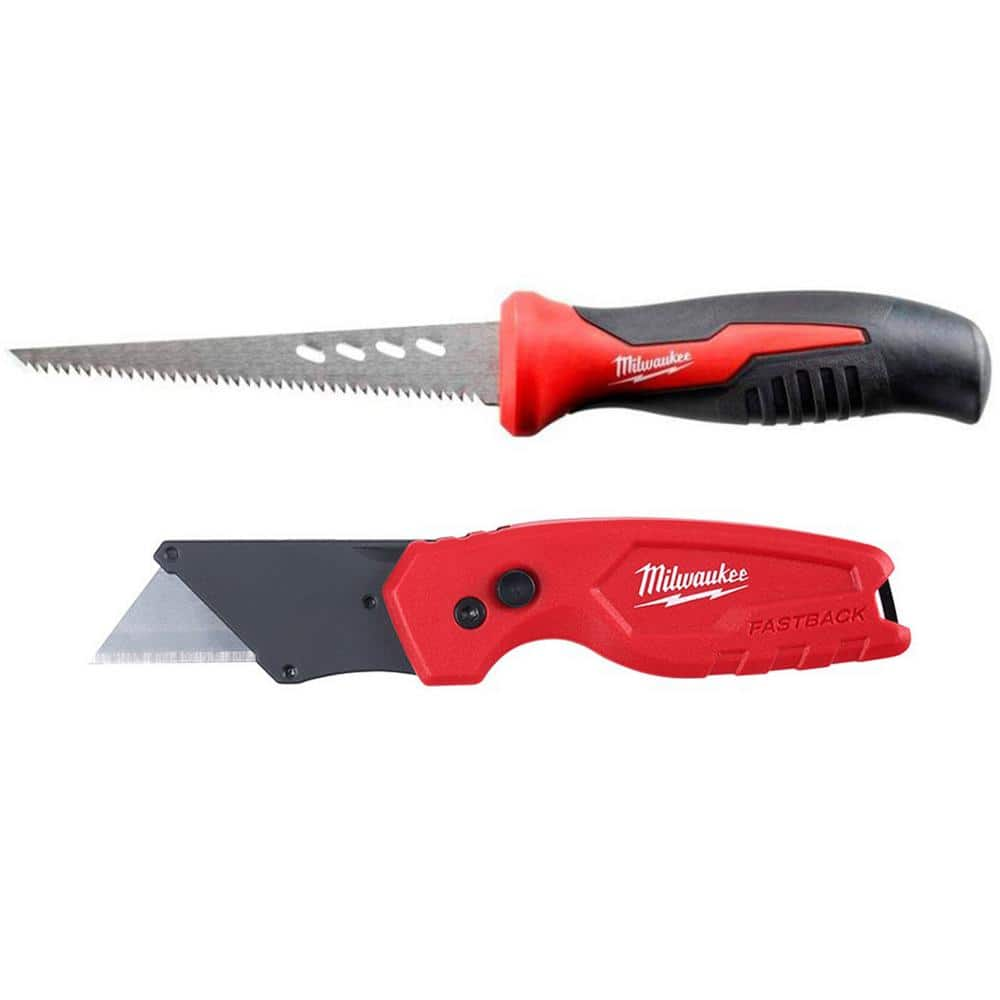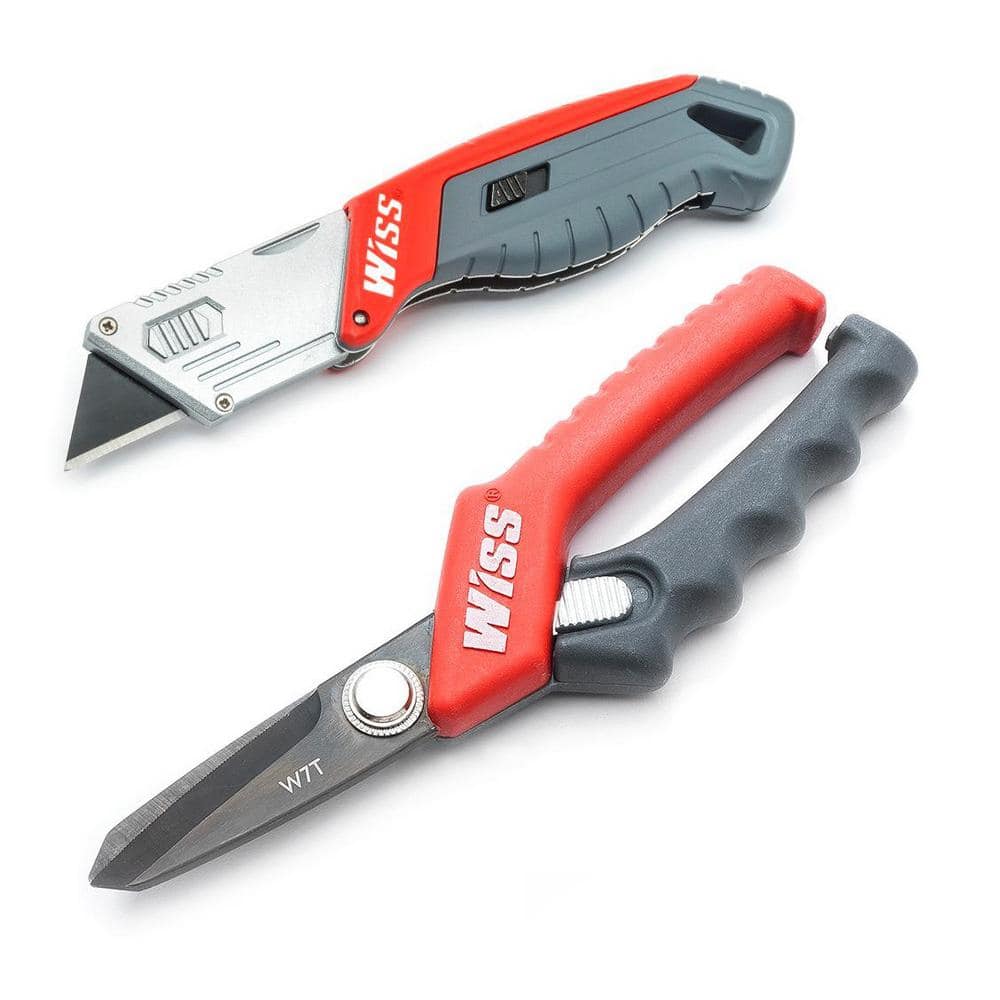Best Box Cutters and Utility Blades for Your Project

Last updated February 18, 2025
No toolbox is complete without a utility knife. Whether it features a retractable, fixed or breakaway blade, a utility knife will undoubtedly prove to be one of your most indispensable tools. This guide teaches you about the different types of blades available and their ideal use.
When using utility knives, always wear eye protection and make sure the blade is properly seated and locked into place before cutting. Keep retractable blades sheathed when not in use. Look for blades with rubber nonslip handles to provide a better grip.
Finally, when cutting through thick materials, make more than one pass if needed. Use sharp blades only because dull blades can easily slip. This guide explains more about the different types of utility knives.
Table of Contents
Retractable Blade
Fixed Blade
Breakaway Blade
Other Features to Consider
Specialty Blades
Retractable Blade

A utility knife with a retractable blade is a good choice for general or everyday use, and offers easy operation. Here are some points to consider about this type of knife:
- A retractable blade design allows you to quickly and easily adjust the sharpness and cutting depth of the blades
- The blade can be fully retracted into the handle when not in use, making a good safety feature
- Retractable blade utility knives feature an easy thumb-operated slider that lets the blade slide all the way out and then lock into place. More advanced knives allow you to lock the blade into multiple positions.
- These knives feature a straight or ergonomically curved knife body to fit your hand and improve performance
- Look for blades with rubber nonslip handles to provide a better grip
Fixed Blade

A fixed-blade knife is ideal for heavy-duty cutting jobs because they don’t feature any moving parts that could give out under stress. Here are some other features of this type of knife:
- These knives feature blades that lock securely into place
- Fixed-blade knives offer greater stability for tough jobs
- Knives of this type come in a wider variety of blades for more versatile use
- Fixed-blade knives offer different handle sizes and widths, so you can choose a model that best suits you
Breakaway Blade

A breakaway-blade knife is housed in a brightly-colored plastic casing and features segmented blades that can be broken off in sections to provide a fresh, sharp edge whenever you need it. Here are some other points to consider about utility knives that feature breakaway blades:
- This type of knife is good for tasks that constantly dull or otherwise affect blades, like long shifts of warehouse work. There are usually eight to thirteen segments to break off.
- Since the segments are designed to snap off, this type of knife is best suited for light- and medium-duty cutting tasks
- Breakaway-blade utility knives don’t accept different blades for specialized tasks, so they are best to keep around for general use
Tip: When cutting through thick materials, make more than one pass if needed. Use sharp blades only because dull blades can easily slip.
Other Features to Consider

Personalize your utility knife to your needs by choosing from features such as self-retraction, hang holes and safety shields. Here are the top features to look for:
- Knives with a folding fixed blade fold up, so they are not exposed and are easier to fit in your pocket or tool pouch
- Self-retraction requires you to keep a button depressed while you’re cutting. Once you release the button, the blade automatically retracts, helping to prevent accidents.
- Blades stored internally are easy to change quickly and efficiently. Use guides or magnets to keep blades in place since loose blades can dull over time.
- A hang hole at the end of a utility knife makes it easy to hang on a nail or to run a lanyard through for easy access
- A string-cutting feature can be a small slit in the body of the knife located just behind the head of the blade, ideal for sliding strings and twine through for quick, easy cuts
- A safety shield keeps your hand safe from abrasive surfaces and hazardous materials
Specialty Blades

In addition to standard utility blades, there are a number of other specialized blades designed for different tasks, including cutting carpet, hobby and craft work. Here are some of the best options to consider:
- Hobby and craft knives are used for cutting, carving, whittling, modeling, trimming and scoring a wide range of materials. They’re often constructed from strong, lightweight aluminum and have a round, slender body for more precise control. Blade designs include low-angle and curved.
- Utility knives designed especially for working with carpet feature double-edged blades used for cutting the tough material
- Gut hook utility knives are used for cutting and trimming roofing, carpet and flooring materials as well as cartons. They won’t cause damage below the cutting surface. Oversized blades are available for thicker materials.
- Round-point utility knives are designed for general cutting tasks. They feature blunt ends to help prevent stab injuries while aiding in penetrating the cutting surface.
A utility knife is a handy, wallet-friendly tool that can provide help in almost any job. Some even specialized models are designed for specific tasks like hobby work and trimming tough materials like carpets when you’re on the job. The Home Depot delivers online orders when and where you need them.







































